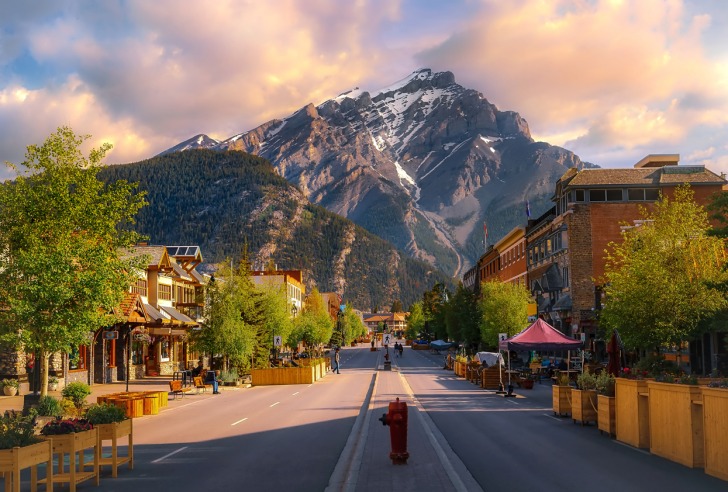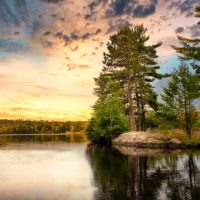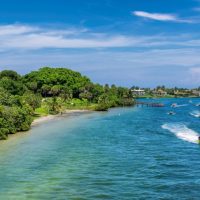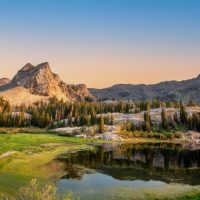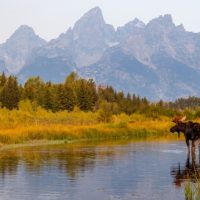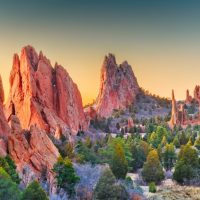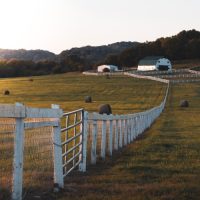Canada is part of North America.
The country has three territories and 10 provinces.
It is known as the second-largest country in the entire world.
Canada is home to more than half of all the lakes in the world as well.
In addition, there are more than 25 snake species that call Canada home.
This guide will provide you with everything you need to know about those snake species, in addition to staying safe while hiking outdoors in Canada.

Contents
- So, Are There Snakes in Canada?
- Snake Species in Canada
- 1. Timber Rattlesnake
- 2. Prairie Rattlesnake
- 3. Eastern Massasauga
- 4. Northern Watersnake
- 5. Queen Snake
- 6. Eastern Garter Snake
- 7. Red-sided Garter Snake
- 8. Eastern Ribbon Snake
- 9. Terrestrial Garter Snake
- 10. Plains Garter Snake
- 11. Valley Garter Snake
- 12. Eastern Milksnake
- 13. Gray Ratsnake
- 14. Smooth Green snake
- 15. Bullsnake
- 16. Plain Hog-nosed Snake
- 17. Eastern Hog-nosed Snake
- 18. Dekay’s Brown snake
- 19. Western Rattlesnake
- 20. Puget Sound Garter Snake
- 21. Maritime Garter Snake
- 22. Northwestern Garter Snake
- 23. Butler’s Garter Snake
- 24. Eastern Foxsnake
- 25. Red-bellied snake
- 26. North American Racer
- 27. Ring-necked Snake
- 28. Northern Rubber Boa
- Is it Safe to Go on a Trek in Canada?
- Interesting Snake Facts in Canada
- 3 Safety Tips for Exploring Nature in Canada
- Summary
- Canada Safety Overview
- Frequently Asked Questions
So, Are There Snakes in Canada?
Just about 28 snakes call Canada home.
Many of them live in the southern part of Canada because it is warmer.
There are only a few out of the 28 that are venomous and harmful to humans.
The two most dangerous snakes in Canada are the Massasauga rattlesnake and the Northern Pacific rattlesnake.
Prairie rattlesnakes, which are located in Saskatchewan and Alberta, are dangerous, but their bites are rarely fatal.
However, they can cause extreme disorientation in humans.
Snake Species in Canada
Here are 28 snakes that live in Canada:
1. Timber Rattlesnake
The timber rattlesnake is venomous and can be as long as 150 cm in length.
They can range in color from yellowish brown to gray, and sometimes even black.
They may even have black or dark brown crossbands on their backs.
2. Prairie Rattlesnake
Prairie rattlesnakes are also venomous and can be found in forests, grasslands, and prairies, hence their name.
They can be as long as 150 cm in length.
They can range in color from greenish-gray to olive-green.
They may even be yellow or light brown.
3. Eastern Massasauga
Many adult eastern massasauga snakes are 60 cm in length.
They can be light brown or gray.
Most of them even have brown spots on their backs.
They can be found in wet areas in Canada.
Their venom is considered cytotoxic and can damage tissues and cause a disruption in blood flow.
4. Northern Watersnake
Northern watersnakes can be anywhere between 60 and 140 cm long.
They are characterized by having reddish-brown or dark-brown bands.
Many of the adults are either dark brown or black, with females being larger than males.
They can be found in marshes, rivers, and streams.
5. Queen Snake
Queen snakes can be anywhere between 60 and 90 cm in length.
They can also be olive-green or brown with two stripes running along their sides.
They are typically found in rivers and streams.
6. Eastern Garter Snake
Eastern garter adult snakes range from 45 to 66 cm in length.
They can vary in color from brown to black to even green.
They can also have a whitish or yellow stripe down their backs.
They are also commonly seen in Canada and are easy to spot.
7. Red-sided Garter Snake
Red-sided garter snakes can be black or even dark green.
They also have three yellow stripes.
They can be found almost anywhere in Canada, such as in shrublands and even forests.
8. Eastern Ribbon Snake
Eastern ribbon snakes can be anywhere between 45 and 66 cm long.
They are also slender and can be brown or black.
They are also characterized by having three yellow stripes.
They are rare and can only be found in streams, ditches, marches, and woodlands.
9. Terrestrial Garter Snake
Terrestrial garter snakes can be anywhere from 45 to 104 cm long.
Most of them have light orange, yellow, or white stripes.
And while these snakes have saliva that can be mildly venomous, they aren’t dangerous or aggressive to humans.
10. Plains Garter Snake
Plains garter snakes can be at least 90 cm long and are grayish-green.
Many of them may even have distinct yellow spots on the top of their heads.
They are commonly found in grasslands and prairies.
11. Valley Garter Snake
Valley garter snakes can be anywhere between 145 and 139 cm in length.
They can also be brown or even black.
All of these snakes are characterized by having three yellow stripes.
They can be found in rocky areas, wetlands, and even forests.
They also adapt well to humans.
12. Eastern Milksnake
These snakes can range in length from 60 to 90 cm.
They can be gray or tan.
Some of them even have black or reddish-brown spots.
Most of their time is spent underground but may also be found under logs, rocks, and boards.
13. Gray Ratsnake
Gray Ratsnakes can be anywhere from 106 to 182 cm in length.
Some of them have measured 250 cm.
They are mostly all black and can have yellow, white, or red spots on their scales.
They can be found near old buildings and barns.
14. Smooth Green snake
Smooth green snakes can be as long as 50 cm and are completely slender.
They can vary in color from yellow to light green.
Some younger ones can be blue-gray or even olive-green.
They can be found in abandoned anthills and burrows.
15. Bullsnake
Bullsnakes can be as long as 180 cm in length.
They can vary in color and may be light brown, yellow, or even beige.
They also have several small spots on their sides.
They are typically found in forests, savannas, and grasslands.
16. Plain Hog-nosed Snake
Plain hog-nosed snakes can be as long as 99 cm.
They can vary in color and may be darker brown or light brown.
They prefer to live in rocky or sandy habitats.
They can only be found in southern Saskatchewan and Alberta.
17. Eastern Hog-nosed Snake
Adult eastern hog-nosed snakes can range in length from 50 to 75 cm.
They can also vary in color and may be gray, brown, yellow, orange, or olive.
They have thick bodies and prefer areas that have sandy soil.
18. Dekay’s Brown snake
Dekay’s brown snakes can be anywhere from 15 to 33 cm in length.
They can also be gray, dark brown, black, or light brown.
They are generally found on logs, boards, and rocks.
19. Western Rattlesnake
Western Rattlesnakes can be as long as 180 cm.
They can be dark gray, dark brown, yellow, or olive-brown.
They also have a dark stripe that goes from the eye to the jaw.
They are found in grasslands and woodlands.
20. Puget Sound Garter Snake
These snakes can be anywhere between 70 and 100 cm long.
They can also be black or dark gray.
They are characterized by having three blue or yellow stripes and can be found in wetlands, forests, and rocky areas.
21. Maritime Garter Snake
Adult maritime garter snakes can be as long as 102 cm.
They can either be brown, dark green, or black.
They can be found anywhere from fields to forests, and they can even survive harsh winters.
22. Northwestern Garter Snake
These snakes can be anywhere from 30 to 60 cm long.
Their color varies and can be brown, gray, blue, or even black.
Many have three stripes, all of which can be yellow, orange, red, white, green, or even blue.
They are found in damp areas.
23. Butler’s Garter Snake
Butler’s garter snakes can be as long as 51 cm and are slender.
They can be black, yellow, or even olive-brown.
Many of them have dark spots on their backs.
They can be found under logs, rocks, and boards.
24. Eastern Foxsnake
Eastern Foxsnakes can be anywhere between 90 and 180 cm in length.
They can also be yellow, golden brown, or bronze.
Many have reddish-brown spots on their backs.
They prefer wet areas and may even be spotted in trees.
25. Red-bellied snake
Red-bellied snakes can be black, gray, orange, or brown.
They can be as long as 25 cm.
They also have bright orange or red bellies, hence their name.
They can be found hiding under leaf litter or logs.
26. North American Racer
Many of these snakes can range anywhere between 50 and 152 cm in length.
They are mainly solid-colored, with lighter bellies.
They have excellent vision and can move up to 3.5 miles per hour.
27. Ring-necked Snake
Ring-neck snakes can be brown, olive, bluish-gray, or a smoky color.
Their heads are a little bit darker than the rest of their bodies.
They can be anywhere between 25 and 38 cm long.
They are hard to find in Canada.
28. Northern Rubber Boa
The northern rubber boa snake can be anywhere between 38 and 84 cm in length.
They can be dark brown or tan and have lighter bellies.
Their tails are short and often confused with their heads.
They can be found in meadows, grasslands, and forests.
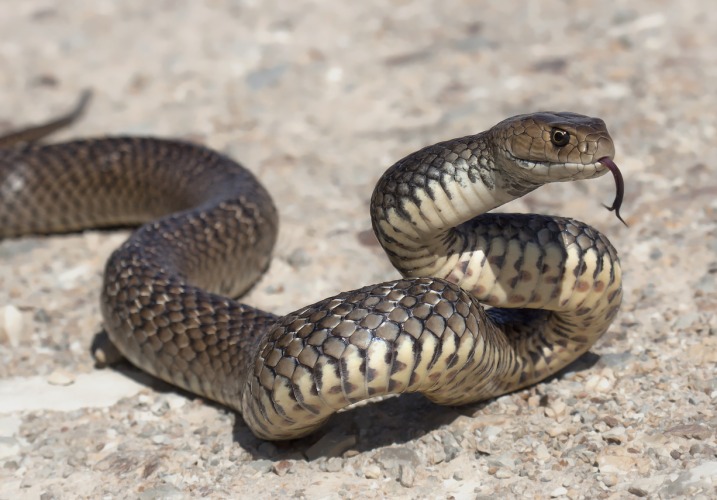
Is it Safe to Go on a Trek in Canada?
Hiking is generally safe in Canada.
The Canadian Rockies provide some of the biggest challenges for those looking to do some climbing.
Many different routes will vary in length and difficulty.
You’ll also find plenty of amazing views and much more.
However, if you’re going to be hiking in the Appalachians, you will need to be extra careful as there are many objective hazards.
Wildlife can be dangerous in Canada and you may come across them, particularly grizzly bears while hiking.
You should take extra precautions in the event you encounter a bear.
Besides bears and snakes, you may also encounter deer, elk, or moose.
Interesting Snake Facts in Canada
Here are some interesting facts about snakes in Canada:
- The blue racer snake is the only snake in Canada that is found on Pelee Island.
- Eastern fox snakes are talented, as they can swim and climb trees.
- The smooth green snake is known for being able to camouflage itself by hiding in grass and shrubs.
- The largest species of snake in Canada is the gray rat snake.
- Ontario’s only venomous snake, the Massasauga rattlesnake is both submissive and shy. They try to avoid contact with humans whenever they can.
- The eastern Foxsnake is extremely rare worldwide. However, you can only find it near the Great Lakes basin in Ohio, Ontario, and Michigan.
3 Safety Tips for Exploring Nature in Canada
Here are three safety tips to keep in mind when enjoying nature in Canada:
- Keep your dog on a leash. Domestic dogs can cause stress for wildlife animals, including wolves and coyotes. They may be looked at as a threat. If you plan on taking your dog with you on a hike or walk, be sure to keep him on a leash at all times. Off-leash dogs can encourage wild animals to act aggressively.
- Give wild animals their space. You can still enjoy wildlife, but from a distance, so be sure to bring your binoculars with you. While this type of encounter may be the first for you, animals experience these encounters all the time. Never attempt to take a selfie with wildlife.
- Be aware of your surroundings. Wildlife can become easily stressed when surprised. This can cause them to attack humans. The best way to prevent this from happening is by paying attention to signs that indicate wildlife is nearby. If you notice signs of wildlife nearby, such as tracks or droppings, make noise.
Summary
There are nearly 28 snake species that call Canada home.
Only about four out of the 28 are venomous.
Two of the most dangerous snakes in Canada are the Northern Pacific rattlesnake and the Massasauga rattlesnake.
While they do bite, their venom is rarely fatal.
Snake species range from the eastern garter snake to the red-sided garter snake.
Hiking is considered safe in Canada as long as you take the necessary precautions to stay safe.
This includes wearing the necessary gear and taking notice of animal and wildlife signs.
Besides snakes, you may encounter bears, deer, elk, and even moose.
Always stay aware of your surroundings, and you’ll be able to safely enjoy everything that Canada has to offer.
Canada Safety Overview
READ THE FULL REPORT: Canada Safety Review
Safety Index: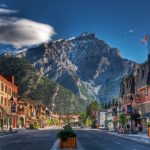
- OVERALL RISK: LOW
- TRANSPORT & TAXIS RISK: LOW
- PICKPOCKETS RISK: LOW
- NATURAL DISASTERS RISK: LOW
- MUGGING RISK: LOW
- TERRORISM RISK: LOW
- SCAMS RISK: LOW
- WOMEN TRAVELERS RISK: LOW
Frequently Asked Questions
What part of Canada has the most snakes?
Most of Canada’s snakes are located in Manitoba.
This area is home to the largest snake population worldwide.
This area is known as the Narcisse Snake Dens of Manitoba, Canada.
Temperatures here can reach -45 degrees Celsius.
However, many of the snakes, including the red-sided garter snake, can stay warm by burying themselves in sinkholes.
Are snake bites common in Canada?
While Canada is home to a couple of venomous snakes, neither one of them is aggressive.
It’s rare for a human to be bitten by one.
Bites normally only occur when someone grabs or steps on one accidentally.
How do snakes survive in Canada?
Snakes are unable to produce their body heat since they are ectothermic.
So, the only way for snakes to avoid freezing during the winters in Canada is by going underground.
Many of them stick together in large groups.
